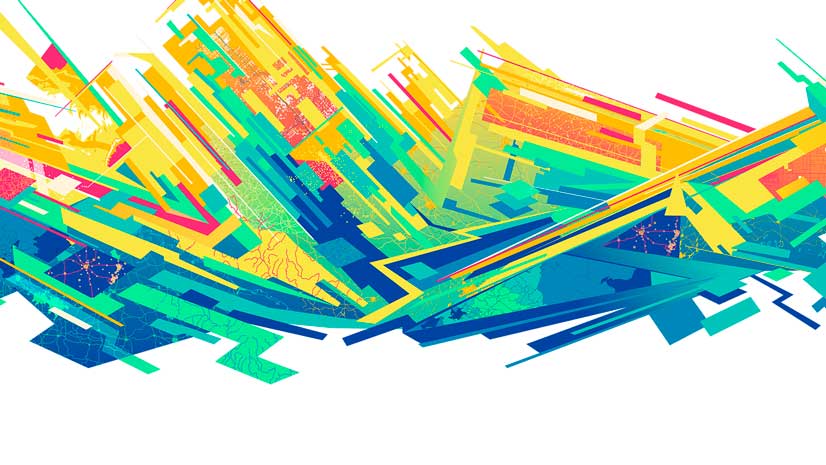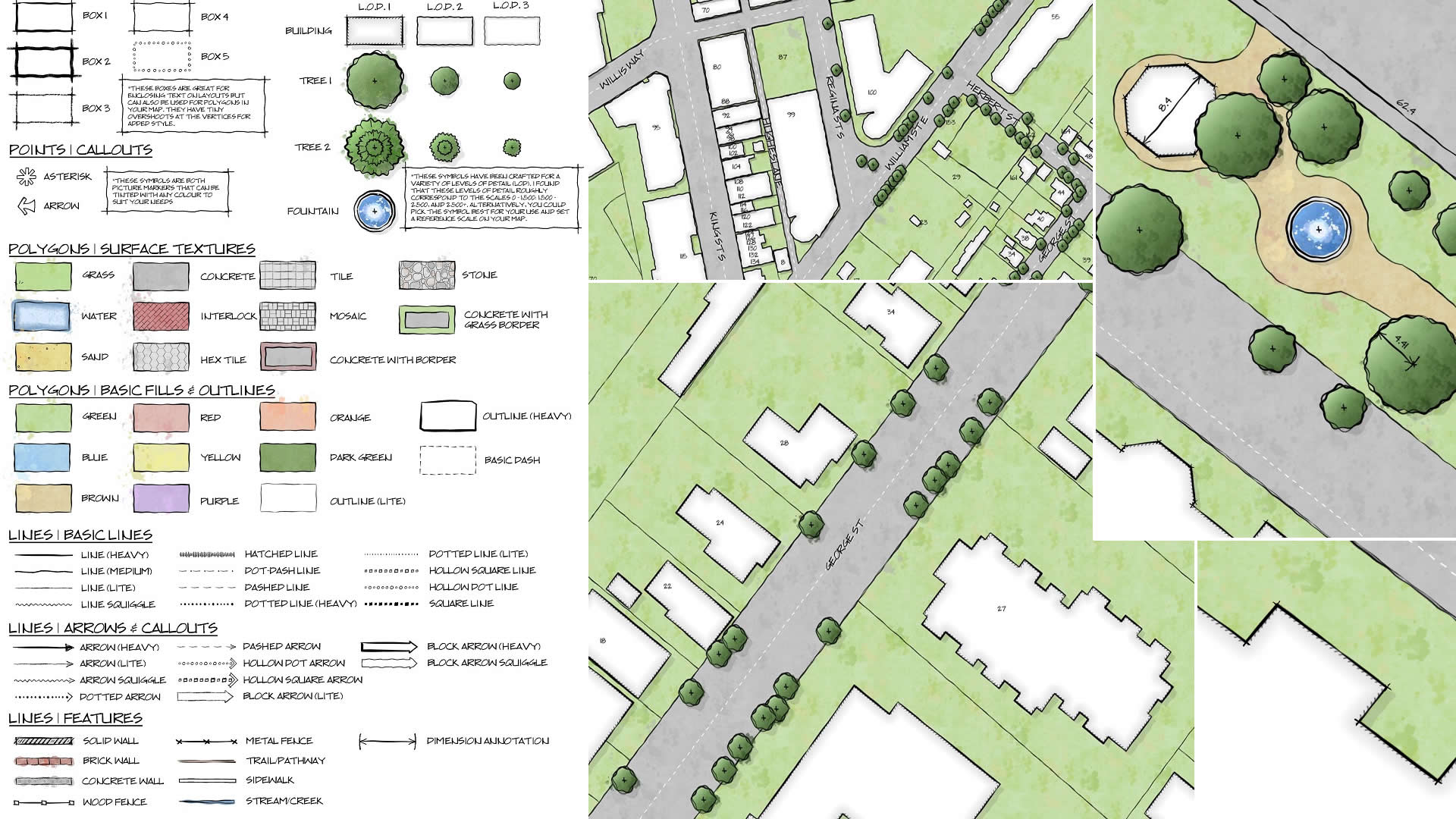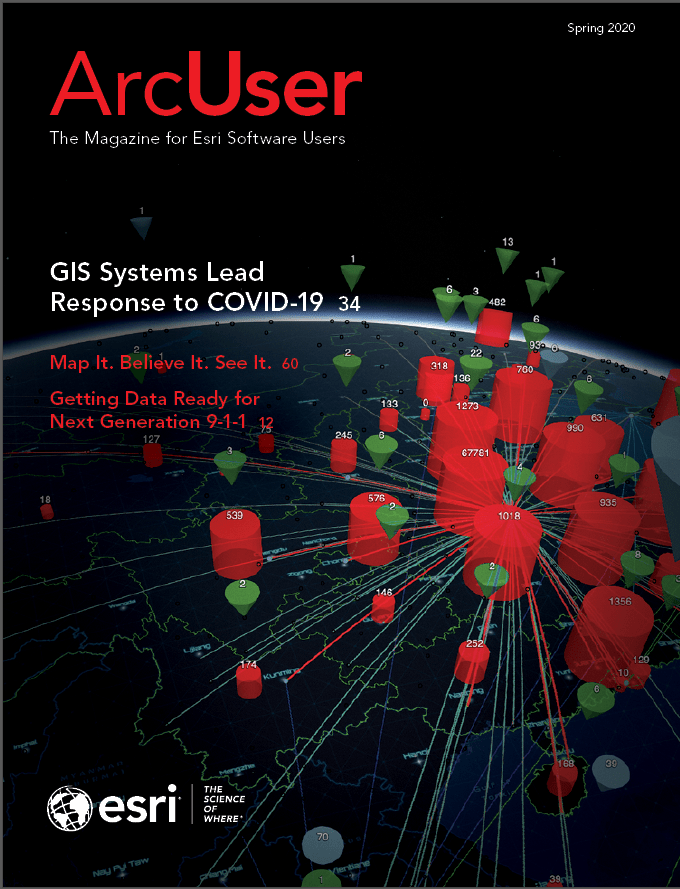An audience of more than 6,000 livestream and Facebook viewers watched the virtual Plenary Session of the 2020 Esri Developer Summit (DevSummit) on March 10. The event was changed to an online format in response to the global coronavirus disease 2019 (COVID-19) pandemic.
2020 Esri DevSummit
The 2020 Esri Developer Summit (DevSummit) was changed to an online format in response to the global coronavirus disease 2019 (COVID-19) pandemic. This ArcGIS StoryMap map describes the events and shares videos that highlight the technology advances announced during the Plenary session on March 10 and select technical presentations.
This was the 15th annual event “for developers, by developers.” Jim McKinney, chief technology officer for ArcGIS Desktop and Esri president Jack Dangermond opened the session. Dangermond noted that the work of developers is creating “a digital transformation using geographic science.”
Following an overview of the ArcGIS platform by Esri director of software development Sud Menon, more than 25 of Esri’s development staff gave presentations that highlighted improvements in data exploration and visualization, the incorporation of real-time data, the application of data science techniques, better scalability, more automated workflows, and an enhanced developer experience.
More Ways to Make Data Meaningful
The ArcGIS API for JavaScript was featured in several presentations. Its enhanced capabilities, which are reflected in the ArcGIS Online Map Viewer beta, can be used by developers to make amazing maps through dynamic and data-driven styling. Updating the API for modern browsers means developers can build fast and powerful interactive apps for data exploration and visualization.
Furnishing information from data rapidly in a readily comprehensible fashion was the theme of a presentation on the new ArcGIS Dashboards. Dashboards have become tremendously popular as a tool for communicating with executives and the public. Using charts, indicators, and gauges, dashboards can summarize complex datasets, presenting information simply. ArcGIS Arcade can now be used in ArcGIS Dashboards to provide more control over display and calculations.
The ArcGIS Runtime SDKs are engineered so developers can build field apps for gathering data from the field that feeds dashboards and visualizations. New releases of the ArcGIS Runtime support apps that can work offline or function with intermittent connectivity and employ strategies that take the load off the server.
Tools for Data Science
ArcGIS supports a complete data science workflow. ArcGIS is used in data preparation/engineering, visualization and exploration, spatial analysis, artificial intelligence integration, and big data analytics using modeling and scripting and provides a unified way to train and use deep learning models. Training data can be directly consumed in ArcGIS Pro, ArcGIS Image Server, and ArcGIS Notebook Server.
Presentations during the Plenary demonstrated how the arcgis.learn module of the ArcGIS API for Python can be used to extract location and other information from lidar, video, unstructured text, and multispectral imagery. The natural language processing that is built into the arcgis.learn module was showcased by Lauren Bennett, lead product engineer for spatial analysis at Esri. She extracted location and other attributes from unstructured text data contained in crime reports and mapped it.
Other improvements for data science were announced. R-ArcGIS Bridge can access remote data sources and call and run geoprocessing tools inside R. Conda now supports R Notebooks. ArcGIS Notebooks is now part of ArcGIS Pro, making spatial analysis in a data science context more accessible and approachable and providing seamless access to powerful open-source Python libraries.
Multidimensional analysis, powered by Raster Analytics in ArcGIS, can be performed using tools in the ArcGIS API for Python and ArcGIS Notebooks. Raster Analytics can quickly perform analyses on large collections of multidimensional datasets through parallelization and distribution of the processing load.
Increased Productivity
Developers were encouraged to start using ArcPy and its Python modules for doing geoprocessing tasks in ArcGIS. Because Esri has been simplifying and adding new ArcPy geoprocessing tools, developers will write fewer lines of code to get tasks accomplished.
ArcObjects, an SDK that has been used to make powerful GIS apps and extend the platform for more than 20 years, will continued to be supported by Esri. However, developers were urged to move to Esri’s latest developer technologies: the ArcGIS Pro SDK for Microsoft .NET, the ArcGIS Enterprise SDK for the .NET and Java platforms, and the ArcGIS Runtime SDKs.
Two builders, AppStudio for ArcGIS and the new ArcGIS Experience Builder, can produce apps with little or no coding. ArcGIS Experience Builder is a new way to build web experiences using templates and widgets.
Access to Gaming Engines
Euan Cameron, chief technology officer for developer technology at Esri, announced that Esri is integrating ArcGIS with Unity and Unreal Engine, two popular game engines.
The integration of ArcGIS with game engines targets extended reality (XR) experiences that combine real-world and virtual environments and the GIS needs of 3D gaming apps. Members of the large existing gaming development community have expressed a desire to get ArcGIS content into game engines to improve gaming applications.
For ArcGIS developers, this integration provides a premium rendering experience and cross-platform hardware support. The Unreal Engine and Unity game engines will bring animation, particle systems, and a physics engine to the app development environment.
Esri will build plug-ins for Unity and Unreal Engine that will provide APIs to access ArcGIS services and local data, come with SDKs to improve productivity, display and honor real-world/geographic coordinate space, integrate with the game developer experience, and come with resources such as samples and demonstration apps.
Keeping DevSummit Going
GeoDev webinars and tech workshops with question and answer sessions, help keep the spirit of DevSummit going year-round. The Esri European Developer Summit is currently slated for November 2020 in Berlin, Germany, but may be subject to schedule changes.




